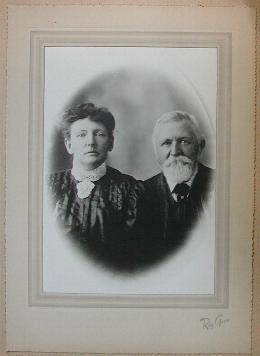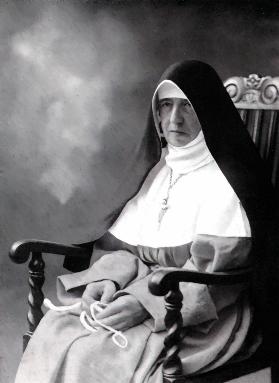
HOW TO MAKE CRADLES
AND LIBRARIES
Was dedicated to my three beloved sons, two of
whom now lost. With thanks to Maria Francesca Gallifanti for the
first three images of cradles, from the Ukraine, Rhodes, and
Palestine.

I used to accept Heloise's desperate plea
to Abelard that scholars and babies, books and cradles, pens and
distaves, do not mix. I now believe they can. In our library,
that I built, I make cradles, too. I also remember the line in
one of my mother's books, on Austrian women, that the hand that
rocks the cradle is the hand that rules the world. What changed
my mind was Hedera. Hedera is Rom from Romania, who has had two
babies born here in Florence. Soon after the second was born I
took her and her baby and her husband in and they slept in my
cell for a week, following the baptism of little Leonardo in
that cell. I had already made a cradle for Hedera, modeled on
those I saw in the Rom camps, but a cradle is not possible when
one can only live in the streets, the Orthodox gypsies not being
allowed in the Moslem gypsy camps. Next, the Romanian gypsies
were rounded up by the Italian police and forced to return to
Romania. So now I make cradles to sell them to benefit Hedera
and her three children, and indeed all the twelve children
living with her mother and father in a camp in Buzau.

Hedera constantly nurses her baby, and
often swaddles him, and holds him, and rocks him, and sings to
him, beautiful songs like the one where she liltingly repeats
again and again 'Alleluia'. Hedera never
went to school, has no alphabet, but is wonderfully intelligent.
Leonardo is always calm. The kind of baby a scholar can live
with and delight in. Hedera raises Leonardo as babies should be
raised in order to be peaceable and happy. She keeps him
immaculately clean, carefully washing all his garments, drying
them in the sunlight on hedges. I am now teaching her how to do
the same with cloth nappies, cloth diapers, because disposable
and carcinogenic and non-biodegradable ones in Romania cost
thirty euro a package and she needs that money instead for food
for the twelve children. In this way her work of laundering is
earning rather than spending, saving not wasting, gaining not
losing. I have bought these from a farm in Cornwall who in turn
have imported them from China and had these sent to her in
Romania. And I will now send an unassembled cradle to her with
the screws that it needs to put it back together so Leonardo can
be rocked to sleep beside her while she launders his clothes and
smiles at him.

This is my first Rom rocking cradle:
 __
__
CRADLE
IN FLORENCE CRADLE
IN ROMANIA
I made it out of scraps of wood I found in the street or was given, only finally buying the rockers specially made, because the doorwood I had used for them was not sturdy enough. Now I am making five cradles out of new bought wood.
These are the sides. Make them larger than I did as my cradles were really too small except for new-born gypsy babies. I would suggest changing the measurements of 70 for the sides and 65.5 for the bottom to 85 or 90 for the sides and 80.5 or 85.5 for the bottom.:

These are the feet to the five cradles, base 22 centimetres, top 33 centimetres, which can be cut so as not to waste wood:

I paint these and the hoods with a design from a fresco in the Roman house of the Cardinal Bessarione. He was the Orthodox scholar at the Council of Florence, when Roman Catholicism and Greek Orthodoxy briefly reconciled. A fitting design for the cradle of a Romanian Orthodox baby born in Florence, Italy. The Fibonacci curves of the vegetation has one's hand and one's eye correspond to their roundness, eschewing square rigid boxes of metal and plastic, but instead being of flowers, fruit, and flourishing leaves. The cradle itself is all curves, like the human body:

These are the rockers and the head board, the head boards measuring 21 centimetres at the bottom, 33 across the widest part, 50 centimetres from bottom to top. The head board needs to be like the foot board except rounded at the top.

And the hood pieces, made of thin and pliable plywood measuring 110 x 17 centimetres, where I haven't finished painting the designs:

When I finish sawing all the pieces I have almost no wood left over, just some triangles, some oblongs, some roundels, all ideal for giving to children with pieces of sandpaper so they can make from them building blocks to play with and as gifts to their younger sisters and brothers.
These are the rough specifications, but in Italian, measured in centimetres:


And this is the new cradle:

This world into which these babies are born is being stretched to the limit and made the cause for wars. Petroleum products for vehicles and for plastics seem more important than water. The ground is being wrecked with plastic non-biogradable garbage, especially babies' garbage, plastic absorbent diapers, nappies, which, moreover, now contain the same carcinogen that caused women's toxic shock. To diaper a modern baby costs thousands of dollars, euros. There is such a simple solution. Cloth diapers, cloth nappies, https://www.teamlollipop.co.uk, to be laundered, perhaps in a washing machine, perhaps even in the system I shared in Italy in the 1960s, where there are three troughs under a roof where the women can come together and gossip and wash the family's clothes, first with soap in the bottom trough, beating these out against the ribbed slanting stone, next wringing them, then rinsing them in the second trough higher up. Then a final rinse in the clear water of the third top trough. Each of these very slowly draining down into the next. I have never seen whiter whites or brighter colours. No soapy residue left that makes the cloth grungy. Instead garments that are soft and clean. This both saves water and improves women's mental health. As Ivan Illich said. Being alone in a kitchen with coffee and squalling babies does not. Later, travelling in Greece, I saw how villagers can conserve on energy, a family member taking the dinner to be cooked in the communal oven, then brought home again when it is ready.
And this is how to make a library, like the Bodleian's, in which this cradle can be placed:

The shelves in the Bodleian Library go along rather than up and down, horizontally rather than vertically, and in this way there is less sag from the weight of the books. The joins are covered by lilied crosses. I copied these from the Bodleian, building two metre square book cases, larger than myself, just being able to get them in and out the main library door, for I cut the wood and assembled them inside, then stained them outside, then brought them in again to beeswax. Next filling them with books. I make my shelves eleven inches apart as I find this includes most books, folios lying on their sides, and in this way, I can organize books either alphabetically or chronologically in such a way that this logical shelving becomes the library system for cataloguing.


These lilied crosses are simplified from those in the Bodleian, and made by hand here in Italy, some in Settignano, above Florence, some in Volterra. They are both beautiful and functional, hiding the joins of the shelves and strengthening them at the same time. They change the mechanical square shape of the shelving into something organic, living, like the contents of the books upon them. They can be made in wrought iron or hammered brass. I make the marbled paper, too, for binding the library's books.

Saw by hand or with an electric saw the cuts in the two or three
supporting planks that are equal to half of the shelf's measure,
knocking them out with a tap of a chisel. Dovetail the similarly
cut shelves into these grooves. Then nail as shown in the
Back/Front drawings.



Both cradles and shelves are finished with warmed beeswax diluted with turpentine and linseed oil, the shelves being first lightly stained with Italian 'penetro', a powder made from ground walnut skins one dilutes with water, all organic substances. The ends of the shelves are lined with paper printed with the Benozzo Gozzoli fresco of the Orthodox Patriarch of Constantinople coming to the Council of Florence. The labels are printed on the computer using the Kelt font. We also, in the library's bottega, besides binding books and making cradles, frame pictures. In this way we become self-sufficient, not needing to pay others, but exchanging work and knowledge and love into what is both beautiful and useful. We print engravings on the press upstairs. And we have as well built a portfolio stand out of the left-over shelving for the bookcases:

The small pieces of
left over wood from the overlapping joins we save and put into
small bags with pieces of sandpaper to give to children to make
into building blocks for the smaller children in their families.
On the library table we keep the pieces of broken pottery we find in the 'English Cemetery', formerly a medieval rubbish dump, and here we show a print made by Bruno Vivoli, of the Giotto Madonna that was once in the Badia, now in the Uffizi:

A detail, showing the curves of the ancient designs:

The hand-loomed
linen comes from Farfa Sabina where they still weave designs
that go back millennia, to Constantinople on the Bosporus and
to the land of the Tigris and Euphrates Rivers, the cradle of
our civilization from whence derived our alphabet and our
designs.


See also How to Bind
Books 1, How
to Bind Books 2, How to Weave
Websites, How to
Embroider Drawn Threads, How
to Raise a Child, etc. And coming soon, How to Marble
Paper.
 LIBRARY PAGES: BIBLIOTECA E
BOTTEGA FIORETTA MAZZEI || ITS ONLINE
CATALOGUE || HOW TO RUN A
LIBRARY || MANUSCRIPT
FACSIMILES || MANUSCRIPTS
|| MUSEUMS ||
FLORENTINE
LIBRARIES, MUSEUMS || HOW TO BUILD CRADLES AND
LIBRARIES || BOTTEGA
|| PUBLICATIONS
|| LIMITED
EDITIONS || LIBRERIA
EDITRICE FIORENTINA || SISMEL EDIZIONI
DEL GALLUZZO || FIERA DEL LIBRO
|| FLORENTINE
BINDING || CALLIGRAPHY
WORKSHOPS || BOOKBINDING
WORKSHOPS
LIBRARY PAGES: BIBLIOTECA E
BOTTEGA FIORETTA MAZZEI || ITS ONLINE
CATALOGUE || HOW TO RUN A
LIBRARY || MANUSCRIPT
FACSIMILES || MANUSCRIPTS
|| MUSEUMS ||
FLORENTINE
LIBRARIES, MUSEUMS || HOW TO BUILD CRADLES AND
LIBRARIES || BOTTEGA
|| PUBLICATIONS
|| LIMITED
EDITIONS || LIBRERIA
EDITRICE FIORENTINA || SISMEL EDIZIONI
DEL GALLUZZO || FIERA DEL LIBRO
|| FLORENTINE
BINDING || CALLIGRAPHY
WORKSHOPS || BOOKBINDING
WORKSHOPS


UMILTA WEBSITE || OLIVELEAF WEBSITE || JULIAN OF NORWICH, TEXT AND CONTEXTS
|| BIRGITTA OF SWEDEN, REVELATIONES,
WEBSITE || CATALOGUE AND PORTFOLIO
(HANDCRAFTS, BOOKS ) || BOOK
REVIEWS || BIBLIOGRAPHY ||
FLORIN WEBSITE �1997-2024 JULIA BOLTON
HOLLOWAY

Blessed Olive Branch,
Kenyan olive-
wood bowl, William Morris
Print
| To donate to the restoration by Roma of Florence's
formerly abandoned English Cemetery and to its Library
click on our Aureo Anello Associazione:'s
PayPal button: THANKYOU! |